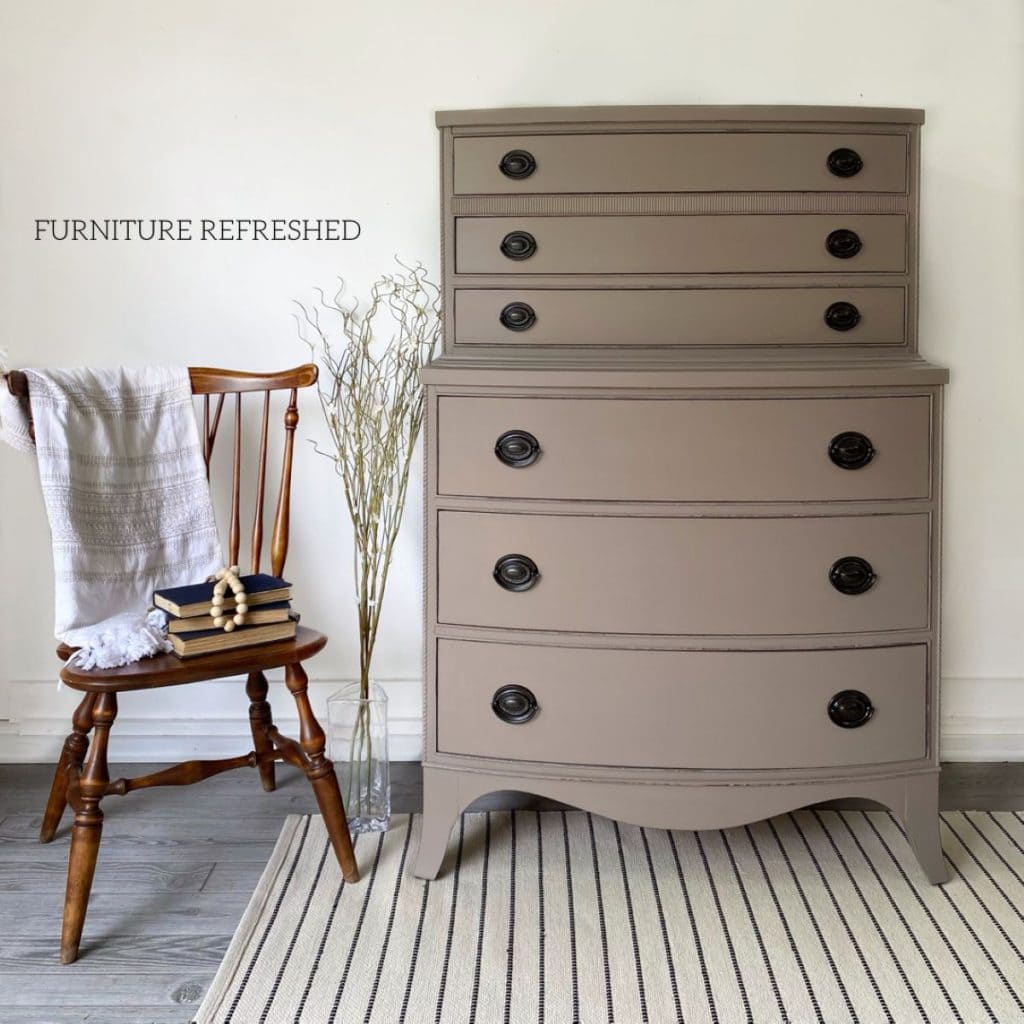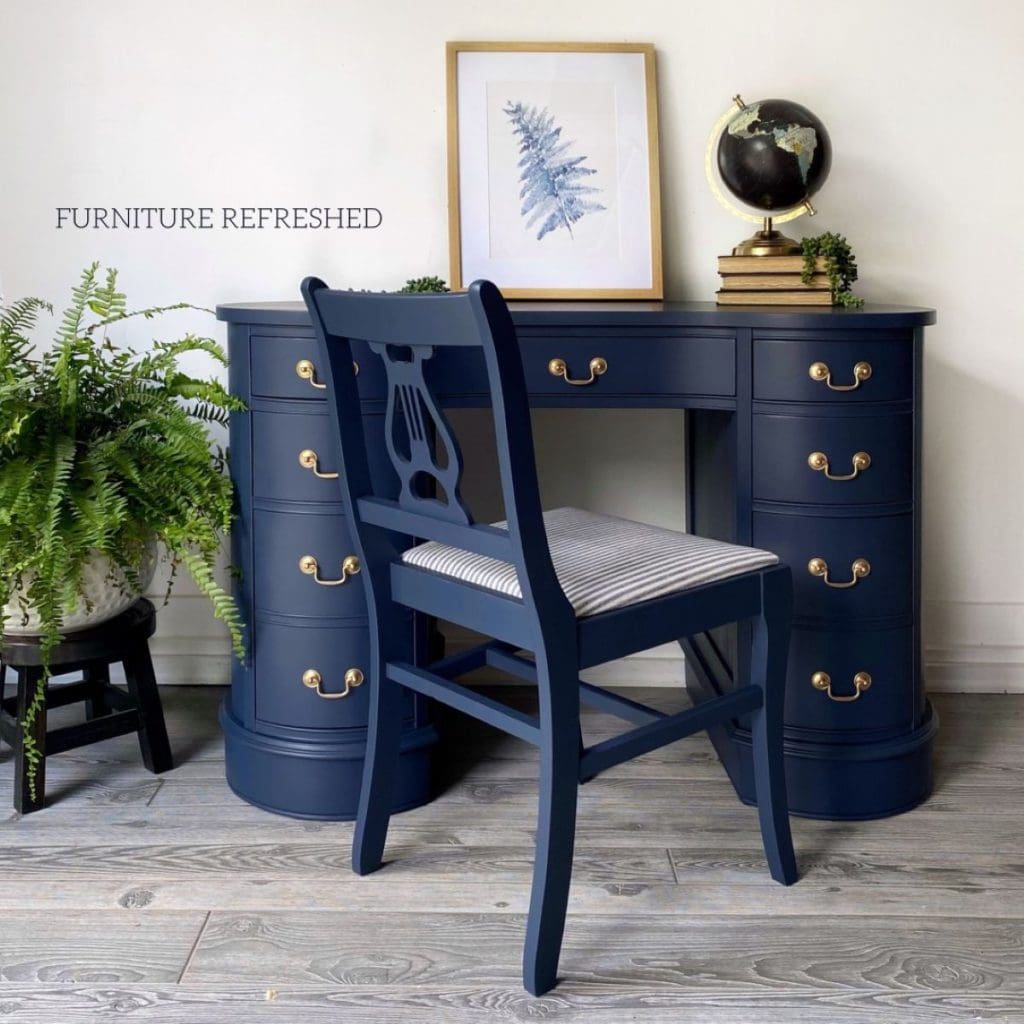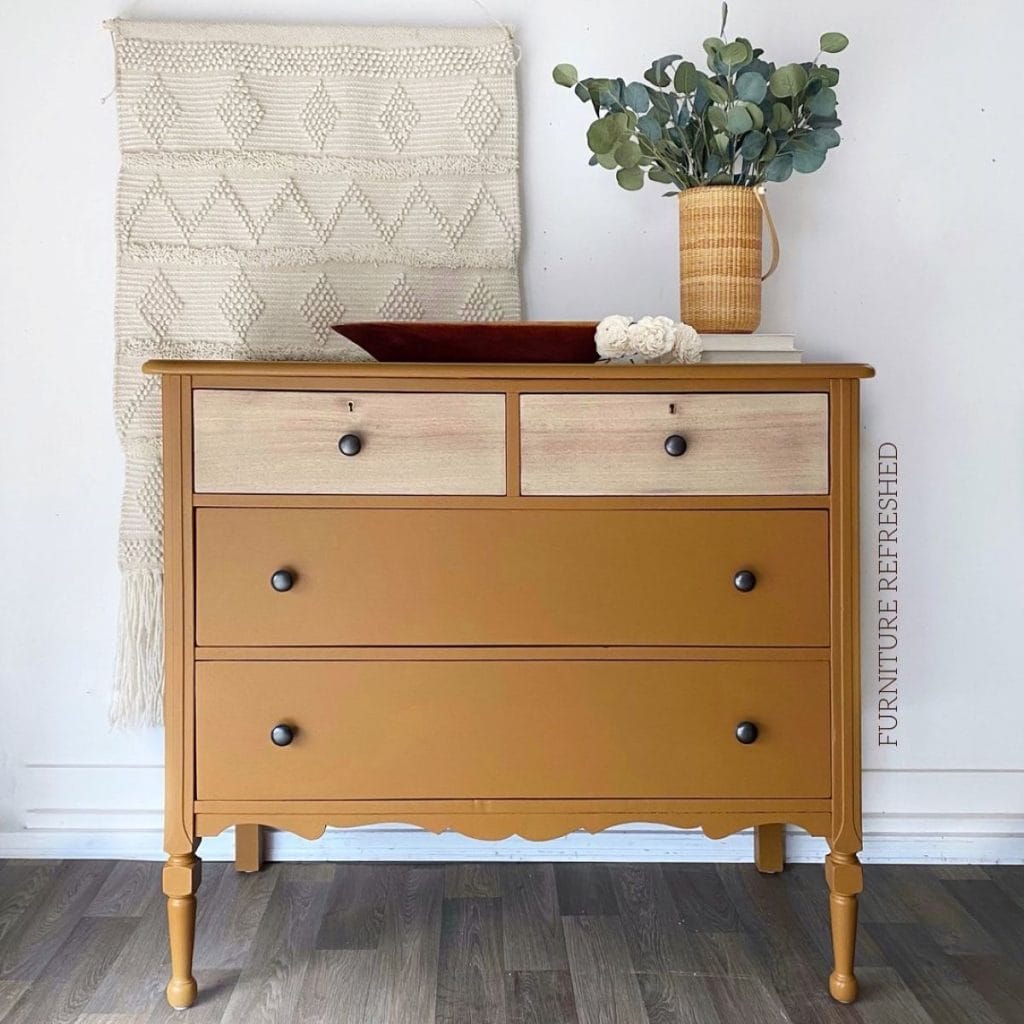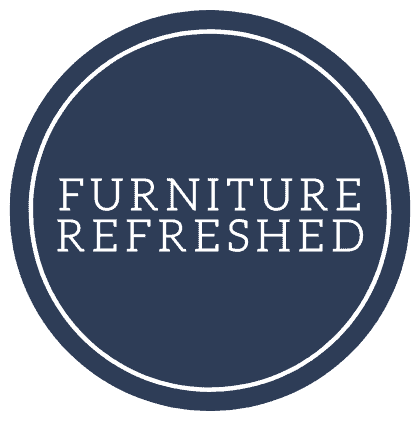A Seller’s Guide to Pricing Refinished Furniture

Ready to turn your hobby of refinishing furniture into a business? If you are like me, you love updating vintage furniture, but eventually run out of places in your own home to put it. The next logical step is to start selling! But pricing refinished furniture can be tricky. You want to be fair to yourself and your buyers. Maybe you’re afraid your piece won’t even sell if you ask too much. You are putting yourself out there, which is intimidating, but it doesn’t have to be.
I’ve been there (and still am there), and if you are systematic about how you price your pieces, the process gets easier. There are two options when it comes to selling refinished furniture. You can either sell your own refinished furniture or work with clients to refinish pieces that they own (commissioned work). I’m sharing what’s worked for me over the years for both scenarios – keep reading to learn more!
Part 1: Pricing furniture you’ve refinished to sell
When just getting started, it’s really important to track your expenses on each piece to understand exactly where you are starting from and what your break-even point is. From there, you can decide on a fair price for the peice of refinished furniture.
Understand your expenses
- Consider the cost of the piece: How much did you pay for it?
- Add up your materials: Include everything! Paint, primer, topcoat, sandpaper, wood filler, hardware, etc… All of the little things add up! If you are reusing things from project to project, Estimate as best you can for materials reused across projects.
- Track your time: It’s important to understand exactly how long it’s taking! I use the stopwatch on my phone to track a project over time (if I’m working more than one day, I’ll jot down my daily totals so that I don’t lose track).
Research the market
Before settling on a price, do a little market research. Local and online listings can give you valuable insight into what refinished furniture is selling for in your area.
- Check on Facebook Marketplace: I use this as a guide only – understand the range here is huge! Things on Marketplace can be wildly underpriced or overpriced, but it is helpful to at least know what’s out there in your area.
- Check on Etsy: understanding that these prices are often higher because sellers are selling nationally and have a larger pool of buyers.
- Other local sales: Look at other refinishers in your area and where they are selling (antique malls, fairs, local shops, etc). See what their prices are in these locations.
- Know your market: Location matters! What sells for $400 in one place may only fetch $200 somewhere else.
Consider the piece of furniture
- Demand: Is the piece you are trying to sell in high demand? In 2020, everyone wanted desks! I refinished so many desks in 2020 – and was able to sell them quickly and for higher prices than I can fetch now, five years later. Have you given the furniture details that limit the piece’s appeal? While those details can be worth more to the right buyer, it may take longer to sell that piece. So be prepared to hold onto these pieces longer or price accordingly!
- Quality: What is the piece you are trying to sell made of? Is it solid wood or particleboard? A known and respected brand? I don’t recommend refinishing pieces to sell that aren’t of high quality, becuase I find the time and effort put into refinishing exceeds the price you can charge for them at the end.

Pricing Formulas
You understand your expenses and you’ve tracked your time. Now, make sure you are paying yourself for those hours! Decide on an hourly rate. As your experience grows and the overall quality of your refinished furniture pieces improves, you will be able to charge more. It’s okay when you are just starting out to work for less, but over time, be sure you are re-evaluating. Here are several formulas you can use to land at the right price!
Basic cost + time Formula
Materials + (Hourly Rate × Hours Worked) = Base Price. This one is great for beginners who are just starting to factor in their time. Even if you choose to adjust your price based on the local market, it’s essential to do this calculation to understand exactly what your hourly rate is and what your material costs are. As you get faster, your hourly rate will go up. And maybe you don’t need to add brand new legs to that dresser when painting the existing ones would look nearly as nice and cost a lot less.
Example
Piece and materials: $75
Time: 10 hours
Hourly Rate: $25/hour
$75 + (10 x $25) = $325
You can round up slightly to account for overhead, time to list and coordinate a sale, etc: Final price: $350-375
Flat Rate per Furniture type
Once you’ve successfully sold several pieces of refinished furniture, you will start to get a better sense of your pricing. It takes extra time and energy to constantly be tracking your time and calculating all of your expenses. And you’ll realize you can’t simply sell one painted 6-drawer dresser for $300 and another for $650 just becuase one needed substantial repairs and took a lot more time. There has to be some consistency in your pricing.
This is where flat rate pricing comes in. Create a pricing sheet for yourself. This can be adjusted, so don’t worry if it’s not perfect! Remember to allow for any special finishes you may be incorporating. This method is how I price my refinished furniture to sell. Several times a year, I will use the “basic cost plus time formula” just to see how this compares to my pricing list (and make adjustments as necessary).
Example
Small end tables: $125-125
6 drawer dresser: $500-600
Buffet/sideboard: $650-750
Stained wood top: add on $50
Note: these are just examples, not actual pricing suggestions
Part 2: Pricing commissioned pieces for clients
When you start selling your pieces locally, chances are people are going to reach out to you and ask if you can update a piece that they own already. This is known as custom work (or commissioned work), and it’s a great way to add income to your furniture refinishing business! But how do you come up with a quote?
Understand the scope of work
Understanding exactly what the client wants—and what condition the piece is in—sets you up for a fair and accurate quote.
- Get photos of the piece: You need to know what you are being asked to do! If you prefer, you can see the piece in person.
- Ask about repairs: Unlike when you are painting your own pieces to sell, any repair work that needs to be done on a client-owned piece is a cost (both materials and time) that can be passed onto the client.
- Ask about hardware or other upgrades: Understand what the client wants in their finished product. New hardware, drawer liners, a stained wood top?
Would you like to save this?
Charge for your time
This is hard to estimate because you haven’t done the project yet! However, if you’ve painted pieces on your own to sell and have tracked your time and expenses (as described in part 1 of this article), you should have a sense of how much time a piece should take you. If you come across an unexpected repair (that the client hasn’t shared with you), it is okay to go back to them and let them know that the repair wasn’t considered in your original quote, and you’ll need to add on some extra.

Create a simple, itemized quote
Now that you understand the scope of the work and have a sense of how long it should take you, you can use the pricing formulas described in part 1 to arrive at your price. Communicate that price to your client with an itemized quote.
- Break down steps and services: Be clear as to what’s included and what’s not. Give options for add-ons so that clients can decide which options they want to include or skip.
- Set boundaries: give your timeline (and stick to it), explain how you deal with unexpected add-ons or repairs, be clear about color choices and how a color change would be handled.
- Ask for a deposit: Remember, you are likely buying a specific paint color or hardware that
It’s also important to remember that you spend more time and money customizing a piece for someone else. Going back and forth when making decisions, or ordering a specific paint color instead of using what you have are just two examples of why this is the case. My custom pieces are at least as expensive, if not more expensive, than a piece I paint to sell on my own.
Where to Sell?
The two primary places I sell my furniture? Facebook Marketplace and Etsy. If you are just getting started, I would recommend Facebook Marketplace. Check out these links to learn more!
How to Sell Furniture on FB Marketplace
How to Sell Furniture on Etsy
Final thoughts on pricing refinished furniture
One of the most important things to remember when pricing your refinished furniture is to give yourself grace! Things come up, and you will have pieces where you make less than you had hoped. But sometimes, things are easier than expected – don’t be tempted to sell that piece for a discount just because it was easy. We all deserve a break! And honestly, the easy and hard projects average each other out in the end if you are pricing consistently.
Have questions? I’m here to help! Simply comment below and I’ll do my best to answer. Remember, don’t undersell yourself. You are creating quality, one-of-a-kind pieces of furniture that will find the perfect home, I promise!
Like what you’ve learned here? Make sure to sign up for my newsletter to get the latest furniture and DIY projects delivered directly to your inbox!



